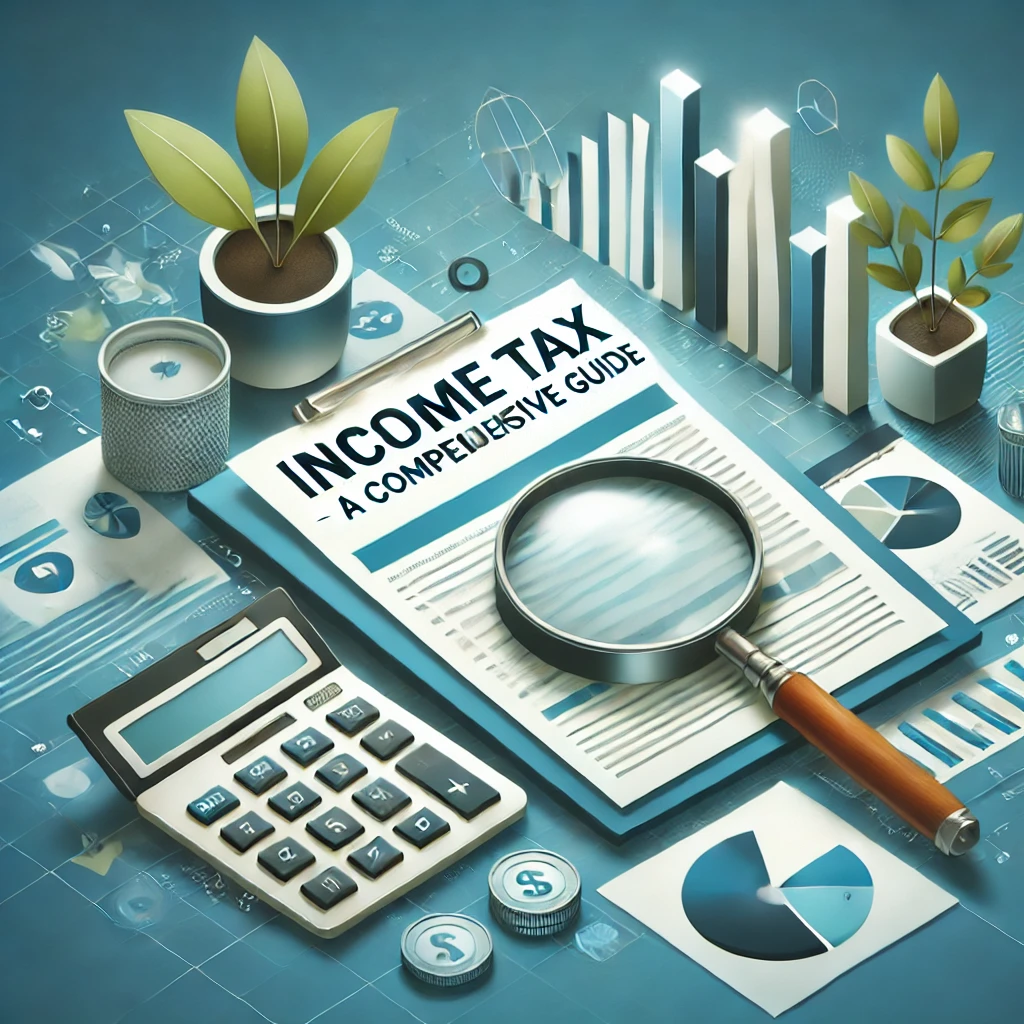Income tax is a direct tax levied by the government on the earnings of individuals and businesses. Understanding income tax is crucial as it impacts financial planning, savings, and investment decisions. Whether you’re a salaried employee, a self-employed professional, or a business owner, knowing the fundamentals of income tax can help you optimize your tax liability and comply with legal obligations. This guide provides an in-depth overview of income tax in India, covering tax slabs, deductions, filing procedures, and more.
Basics of Income Tax
What is Income Tax?
Income tax is a compulsory financial charge imposed by the government on income earned by individuals and entities. The tax revenue collected is used for public services, infrastructure development, and welfare schemes. Income tax is governed by the Income Tax Act, 1961, and is administered by the Central Board of Direct Taxes (CBDT).
Who is Liable to Pay Income Tax?
Income tax liability depends on factors such as residential status and income sources. The following entities are required to pay income tax in India:
- Individuals (Salaried employees, self-employed professionals, freelancers)
- Hindu Undivided Families (HUFs)
- Companies and Corporations
- Partnership Firms and LLPs
- Trusts and Non-Profit Organizations
History and Evolution of Income Tax in India
The concept of taxation dates back to ancient India. However, modern income tax was introduced in 1860 by the British government. Over the years, tax laws have evolved with significant reforms, including the introduction of GST, digital taxation, and tax incentives for startups and businesses.
Income Tax Slabs and Rates
Income Tax Slabs for FY 2025-26
The Indian tax system follows a progressive structure where tax rates increase with income levels. The latest income tax slabs are as follows:
New Tax Regime (FY 2025-26)
| Annual Income Range | Tax Rate (%) |
|---|---|
| Up to ₹4,00,000 | 0% |
| ₹4,00,001 – ₹8,00,000 | 5% |
| ₹8,00,001 – ₹1,200,000 | 10% |
| ₹1,200,001 – ₹1,600,000 | 15% |
| ₹1,600,001 – ₹2,000,000 | 20% |
| ₹2,000,001 – ₹2,400,000 | 25% |
| Above ₹2,400,000 | 30% |
Under the Old Tax Regime, taxpayers can avail deductions under various sections, such as 80C, 80D, and HRA exemptions.
How Tax Rates Differ for Different Entities
- For Individuals: The tax rates vary based on income slabs.
- For Senior Citizens: Individuals above 60 years have a higher exemption limit.
- For Corporates: The corporate tax rate stands at 22% for domestic companies.
Income Tax for Salaried Individuals
Salaried individuals can claim standard deductions, HRA, and professional tax benefits under the old regime. The new tax regime does not allow most deductions but offers lower tax rates.
Components of Taxable Income
Different Heads of Income
Income is classified into five heads:
- Salary Income: Earnings from employment.
- Income from House Property: Rent received from property.
- Profits and Gains from Business or Profession: Earnings from self-employment or business.
- Capital Gains: Profit from selling assets like stocks or real estate.
- Income from Other Sources: Interest, dividends, gifts, and lottery winnings.
Allowances and Perquisites
Allowances like House Rent Allowance (HRA) and Leave Travel Allowance (LTA) are partially exempt. Perquisites such as company-provided cars or subsidized loans are taxable.
Deductions and Exemptions
Common deductions include:
- Section 80C: Investments in PPF, ELSS, EPF, etc.
- Section 80D: Health insurance premium deductions.
- Section 24: Home loan interest deduction.
Filing Income Tax Returns (ITR)
Importance of Filing ITR
Filing ITR is mandatory for individuals earning above the exemption limit. Benefits include loan approvals, visa applications, and tax refunds.
Types of ITR Forms
- ITR-1: Salaried individuals with income up to ₹50 lakh.
- ITR-2: Individuals with capital gains and foreign income.
- ITR-3: Business owners and professionals.
- ITR-4: Presumptive taxation scheme.
4.3 Steps to File Income Tax Returns Online
- Register on the Income Tax e-filing portal.
- Select the applicable ITR form.
- Fill in income details and claim deductions.
- Verify using Aadhaar OTP or DSC.
- Submit and e-verify the return.
Tax Planning and Savings
Best Practices for Tax Planning
- Invest in tax-saving instruments.
- Optimize deductions and exemptions.
- Plan expenses like medical insurance and home loans wisely.
Investments for Tax Savings
- Public Provident Fund (PPF): Long-term savings with tax benefits.
- National Pension System (NPS): Retirement-focused tax-saving investment.
- ELSS (Equity Linked Saving Scheme): Tax-saving mutual funds.
Tax Benefits for Senior Citizens
- Higher exemption limit (₹3 lakh for senior citizens, ₹5 lakh for super senior citizens).
- Exemptions on pension and medical expenses.
Taxation of Businesses and Corporates
Corporate Tax Rates in India
- Domestic companies: 22% (without exemptions)
- New manufacturing companies: 15%
- Minimum Alternate Tax (MAT): 15%
GST and Its Impact on Business Taxation
- Overview of GST structure.
- How GST affects business taxation and compliance.
Presumptive Taxation Scheme
- Eligibility criteria and benefits.
- Applicability for small businesses and professionals.
Conclusion
Understanding income tax laws helps individuals and businesses comply with tax regulations while optimizing savings. By leveraging deductions, exemptions, and strategic tax planning, taxpayers can minimize liabilities and make informed financial decisions. Staying updated on tax reforms ensures better financial planning and compliance with government regulations.



